
West Coast Wilderness Railway
Queenstown, Tasmania, Australia
In February 2011 Nigel Day visited the West Coast Wilderness Railway.
This 3'6" gauge rack and adhesion line has its headquarters in the Tasmanian mining town of Queenstown. The line, which is very impressive, runs for 22 miles (35km) from Queenstown to the town of Strahan on the west coast of Tasmania. The line is laid on the formation of the former Mt Lyell Mining and Railway Company Limited's route built for exporting minerals, mainly copper, mined in the area. Until the 1930s there was no road access to Queenstown, in part due to the difficulty of the terrain. Even after the coming of the road the railway was crucial to the local economy but, by 1963, this had changed and the line shut. It stayed shut until the early part of the 21st century. Government money was put up to fund the total reconstruction of the line and everything it required. This was a considerable feat in itself with many of the wooden trestle bridges needing replacement, not to mention the clearing and preparation of the trackbed of rails to be laid once more. The line was fully re-opened in late 2002, after a period of operation of what had, to that point, been reconstructed.

The railway runs through parts of Tasmania only accessible by using the train or walking, for much of its length there are no roads nearby. The majority of the route is flat enough for normal adhesion working to be sufficient but, when the line was first built, it was found that the only practical way of getting the railway through the terrain was to use a section of rack. Abt was selected with ruling gradients of 1 in 16 when heading west and 1 in 20 when heading east.
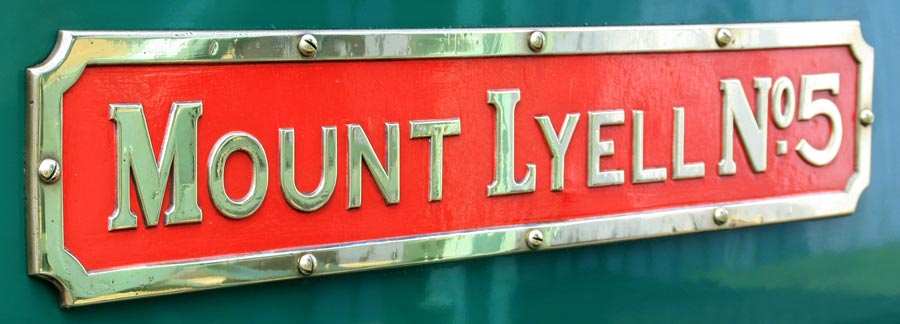
The locomotives in use on the line are some of those which used to work it having, very fortunately, survived on display at various locations. They are 0-4-2t locos with 4 simple cylinders, the outside pair drive the adhesion wheels and the inside pair the pinions which engage the rack. The two sets of engines are not linked an anyway. In the cab the driver has 2 regulator handles to operate. These locomotives were built by Dubs (Nos. 1-4) and North British (No.5) of Glasgow. They were originally coal fired but were converted to burn oil when in service for the Mt Lyell Company. Today they still burn oil but now 'boiler oil' - a spun and filtered used oil - rather than the heavy oil of previous times.
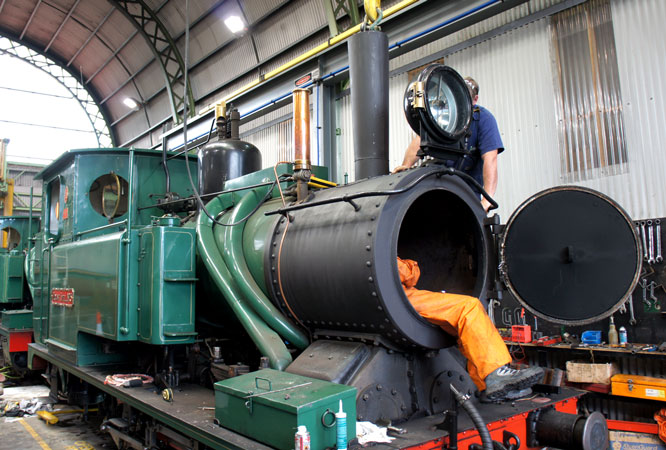
Fitting the fabricated diffuser and mixing chamber to Mount Lyell No.5 in the workshops at Queenstown.
Nigel's visit in February 2011 saw locomotive No.5 equipped with a Lempor exhaust ejector designed to fit within the existing chimney. The Lempor was an instant success leading to a more efficient locomotive which has the benefit of also having more power, should that be needed. Given the current (April 2011) price of oil the reduction in fuel burnt to complete a duty is already proving the usefulness of the work undertaken.
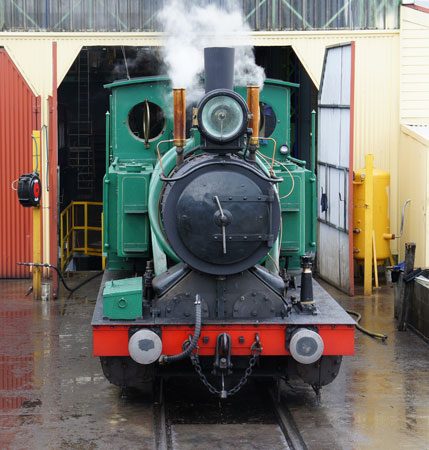
Mount Lyell No.5 brews up outside the works at Queenstown.
 |
 |
On the left No.5 performs a restart test on the rack. On the right, with test gear fitted, No.5 stands at Dubbil Barrel. The counter pressure brake exhaust pipes are the items behind the diffuser. |
|
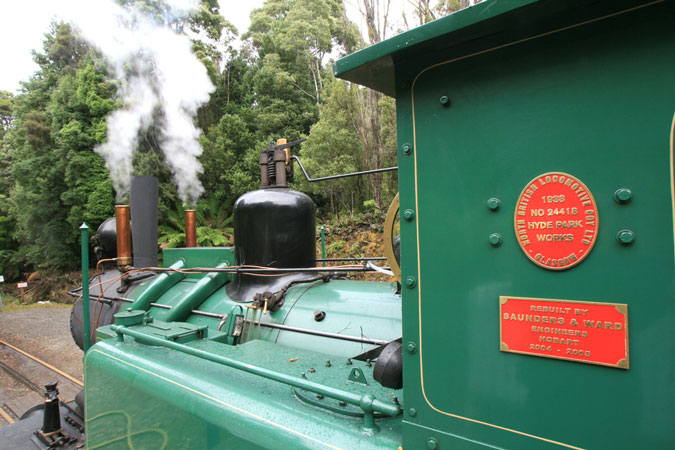
Mount Lyell No.5, whilst on test, at Rinadeena, the summit of the line. Note the rack down to Dubbil Barrel in front of the loco.
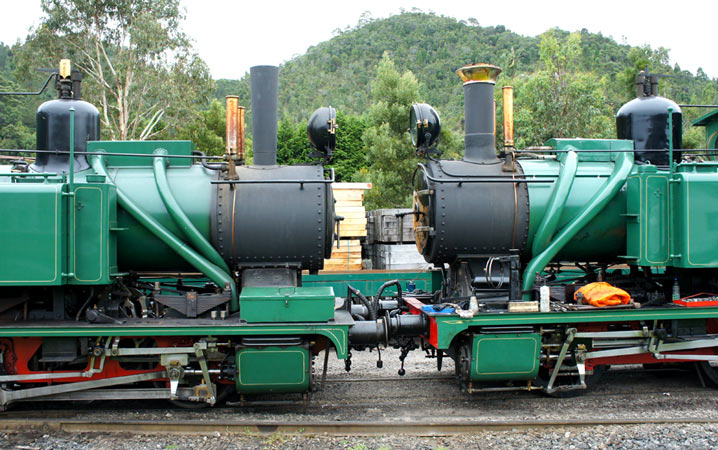
Front end comparison - No.5 on the left and No.1 on the right.
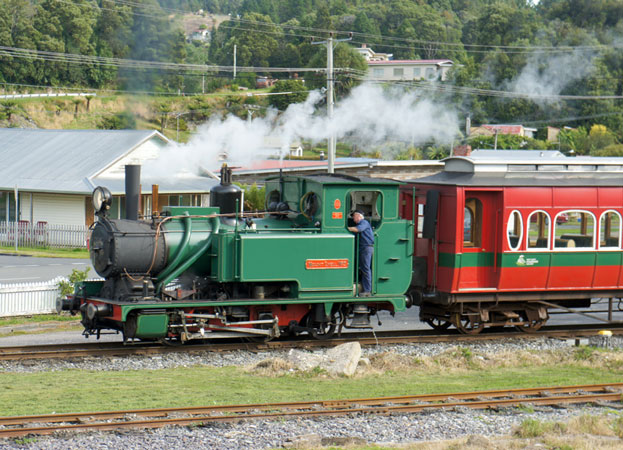
Mount Lyell No.5 runs past the workshop heading for Queenstown station.
A lot more work is now planned to build on this initial success. More to follow.
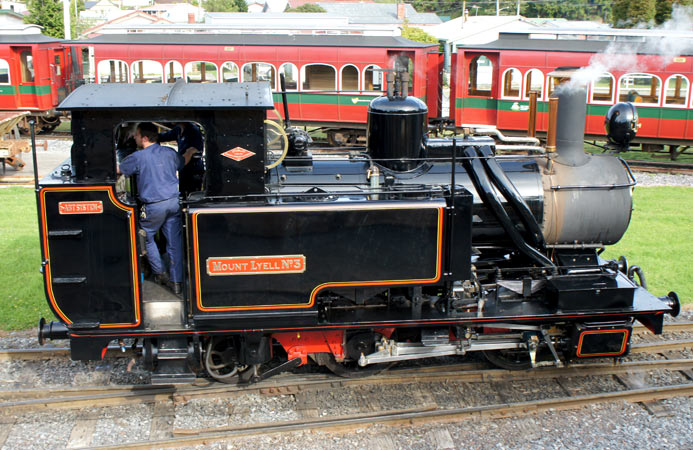
Mount Lyell No.3 - soon to be withdrawn for overhaul and........
All photographs above are © N.A.H.Day and were taken in February 2011.
However...
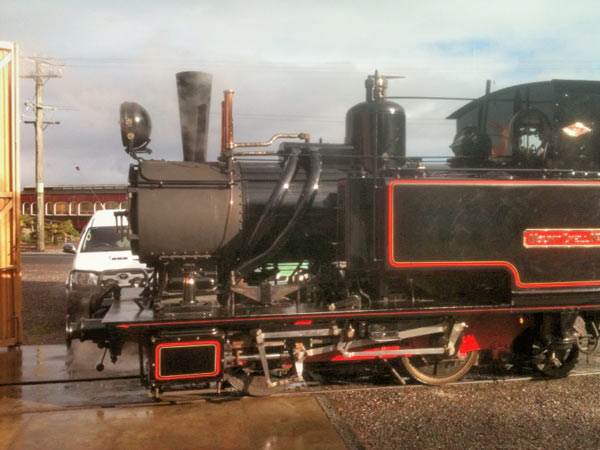
So pleased with the modification of No.5, the railway has not waited for No.3 to go in for its overhaul to fit it with a Lempor. As can be seen this time a wider diffuser, which will further improve the exhaust system's performance, has been fitted. © Ben Elliot.
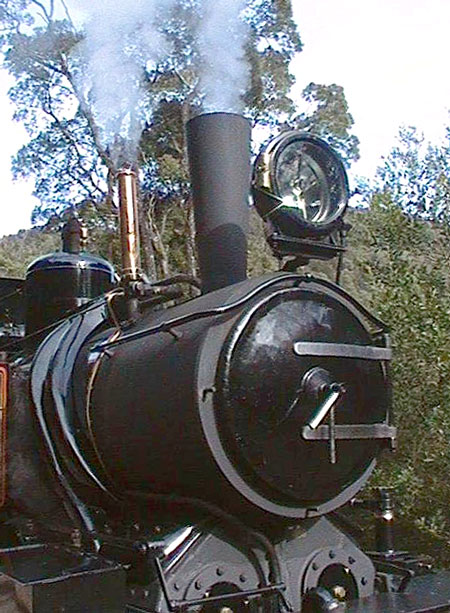
Mount Lyell No.3 with its new Lempor. © Ben Elliot.
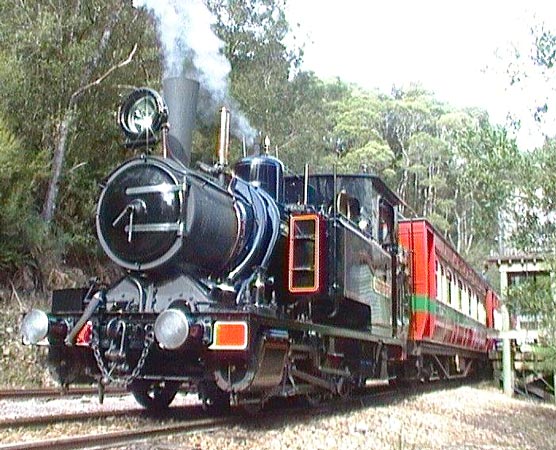
Mount Lyell No.3 at Lower Landing. © Ben Elliot.